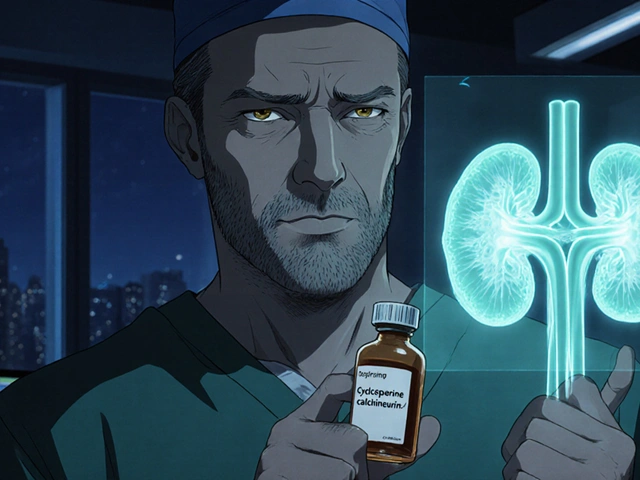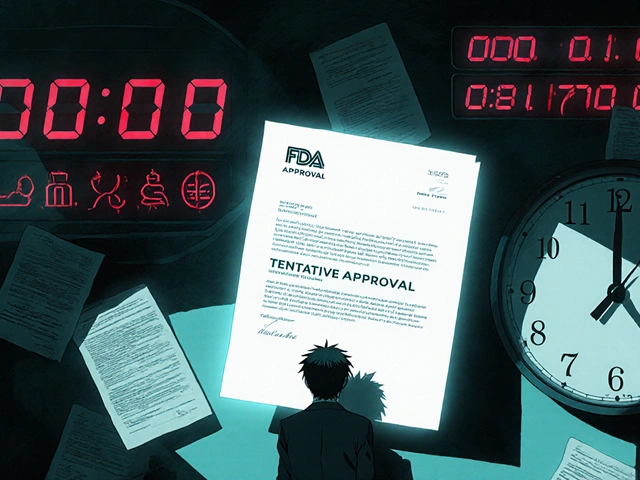
Living with celiac disease isn’t just about avoiding bread or pasta. It’s about relearning how to eat, how to survive, and how to heal your body from the inside out. For 1 in every 100 people worldwide, gluten isn’t just an inconvenience-it’s a silent attacker. Every bite of wheat, barley, or rye triggers an autoimmune response that shreds the lining of the small intestine. Left unchecked, this leads to malnutrition, osteoporosis, anemia, and even rare cancers. But here’s the good news: gluten-free living works. When done right, 95% of people feel dramatically better within weeks. The catch? It’s not enough to just skip the bread. You need a full plan-nutrition, vigilance, and follow-up.
What Exactly Happens When You Eat Gluten With Celiac Disease?
It’s not an allergy. It’s not intolerance. It’s an autoimmune war. When someone with celiac disease eats gluten, their immune system mistakes it for a threat and attacks the villi-tiny, finger-like projections in the small intestine that absorb nutrients. These villi get flattened. Think of it like a carpet with all the fibers worn down. Suddenly, your body can’t absorb iron, calcium, vitamin D, B12, or folate. That’s why so many people with celiac are anemic, tired, or have brittle bones-even if they’re eating plenty of food.
Symptoms vary wildly. Some people have explosive diarrhea and bloating. Others have joint pain, brain fog, skin rashes, or infertility. Kids might stop growing. Adults might feel exhausted all the time. And here’s the kicker: nearly 60% of people with celiac have no obvious gut symptoms at all. That’s why so many go undiagnosed for years-sometimes decades.
The Only Treatment: 100% Gluten-Free, No Exceptions
There’s no pill. No surgery. No miracle cure. The only treatment is total, lifelong gluten avoidance. That means no wheat, barley, rye, or any derivative-malt, brewer’s yeast, wheat starch, modified food starch unless labeled gluten-free. Even a crumb of bread can keep your intestine damaged. Research shows that just 50 milligrams of gluten a day-the size of a crouton-is enough to stop healing in half of patients.
Safe foods? Naturally gluten-free grains like rice, quinoa, buckwheat, millet, teff, and certified gluten-free oats. Yes, oats. Most people can eat them, but only if they’re labeled gluten-free. Cross-contamination during farming or processing is common. Start with small amounts-50 grams a day-and watch for reactions. About 5% of people still can’t tolerate them.
Hidden gluten? It’s everywhere. Soy sauce, salad dressings, soups, processed meats, even some medications and vitamins. Always check labels. “Wheat-free” doesn’t mean gluten-free. And never trust a restaurant’s word alone. Only 28% of U.S. restaurants have verified gluten-free protocols. Use the Celiac Disease Foundation’s dining cards-they’re available in 30+ languages.
Common Nutrient Deficiencies and What to Supplement
Even with a perfect gluten-free diet, deficiencies stick around. Why? Because your gut took years to heal, and you lost a lot of ground. Here’s what most people need:
- Iron: 12-63% of newly diagnosed patients are anemic. Women need 18 mg daily; men need 8 mg. Ferrous sulfate or ferrous gluconate works best. Take with vitamin C for better absorption.
- Vitamin D: 37-75% are deficient. Most need 1,000-2,000 IU daily, sometimes more. Get your blood level checked. Optimal is 40-60 ng/mL.
- Calcium: 25-40% are low. Aim for 1,000-1,200 mg daily. Pair with vitamin D. Dairy isn’t always an option-try fortified plant milks, kale, or sardines.
- B12 and Folate: Crucial for nerve health and red blood cells. Many need 250-500 mcg of B12 (sublingual works best) and 400 mcg of folate daily. Avoid folic acid-use methylfolate instead.
- Magnesium: Often overlooked. Helps with muscle cramps, sleep, and energy. 400 mg daily is common in recovery protocols.
Don’t guess. Get blood work done before and after starting supplements. Some people need IV iron if oral doesn’t work. One patient on a celiac forum reported her chronic fatigue vanished after six months of daily B12 shots and magnesium.

Follow-Up Isn’t Optional-It’s Lifesaving
Going gluten-free isn’t a one-time switch. It’s a long-term project. Here’s what a real follow-up plan looks like:
- Month 1: Meet with a certified gluten-free dietitian. They’ll review your labels, meals, and supplements. Most major U.S. hospitals have them.
- Month 3: Blood tests. Check tTG-IgA (the main celiac antibody), CBC, iron, ferritin, vitamin D, calcium, B12, folate.
- Month 6: Repeat antibody test. Levels should drop by at least 50%. If they don’t, you’re still being exposed to gluten-maybe in your kitchen, your medications, or even your lipstick.
- Year 1 and beyond: Get a DXA scan to check bone density. Most people see improvement in 1-2 years. Repeat every 2-3 years.
And here’s something most doctors don’t mention: 30% of people still have symptoms even after going gluten-free. Why? Unintentional exposure. Cross-contamination in shared toasters, fried foods in shared oil, or even gluten in Play-Doh your kid touched. Keep a food and symptom journal. Track everything.
The Hidden Costs and Real Challenges
Gluten-free bread costs nearly 160% more than regular bread. A box of gluten-free pasta? Double the price. A gluten-free pizza? You’re looking at $15-$25. That’s not just inconvenient-it’s a financial burden. Many people cut corners, eat lower-quality gluten-free products, and end up with more inflammation and less nutrition.
Medications are another blind spot. About 30% of prescription pills contain gluten as a filler. Check the Gluten-Free Drug Database from the University of Chicago. It’s free. Ask your pharmacist to verify each script.
And yes, there’s stigma. People think you’re being picky. Your aunt insists you “just need to try a bite.” Your coworker brings donuts to the office. You learn to say no-firmly, calmly, and without apology. You’re not being difficult. You’re protecting your health.

What’s New in 2025? Hope on the Horizon
Science is moving fast. In 2025, the European Society for the Study of Coeliac Disease updated guidelines to allow diagnosis in children without a biopsy-if antibody levels are extremely high and other tests confirm it. That’s huge. Fewer needles, less stress.
There’s also a new tool called the epithelial lymphogram. It’s a blood test that detects immune cells specific to celiac damage with 98% accuracy. No endoscopy needed. It’s not everywhere yet, but it’s coming.
And then there’s the Nima Sensor-a tiny device you put a crumb of food into. In two minutes, it tells you if gluten is present above 20 ppm. It’s not perfect, but it’s a game-changer for dining out.
Long-term, researchers are testing enzyme therapies and even a vaccine. But none of that matters if you’re still eating gluten. Right now, the only proven treatment is still the same as it was in the 1950s: avoid gluten. Period.
Real People, Real Results
On Reddit’s r/celiac, 78% of people say their energy, digestion, and mental clarity improved within three months of going gluten-free. One man in Sydney told his doctor he’d been “always tired” for 12 years. After diagnosis and starting iron and B12 supplements, he ran his first 5K at age 48.
Another woman in Melbourne had chronic migraines for a decade. No one could figure it out. After her celiac diagnosis, she cut gluten and added magnesium. Within six weeks, the headaches vanished.
But it’s not all smooth sailing. One in four still has iron deficiency after a year. Why? Because they didn’t supplement properly. Or they ate gluten-free junk food-rice cakes, potato chips, sugary snacks-and never fixed the root problem: nutrient absorption.
Final Checklist: Are You Doing It Right?
- ✅ You’ve been tested for tTG-IgA and total IgA before going gluten-free?
- ✅ You’re eating only certified gluten-free oats, if any?
- ✅ You’ve checked all medications and supplements for gluten?
- ✅ You have separate kitchen tools (toaster, cutting board, utensils)?
- ✅ You’ve had blood work for iron, ferritin, vitamin D, calcium, B12, and folate?
- ✅ You’re taking supplements based on actual lab results-not guesswork?
- ✅ You’ve consulted a dietitian who specializes in celiac disease?
- ✅ You’re getting a bone density scan if you’re over 30?
If you answered yes to all eight, you’re on the right track. If not, start with one. Fix one thing. Then another. Healing isn’t about perfection. It’s about progress.
Can you outgrow celiac disease?
No. Celiac disease is a lifelong genetic condition. You can’t outgrow it. Even if you feel fine, eating gluten will keep damaging your intestines. There’s no cure, only management through strict gluten avoidance.
Are gluten-free products healthier?
Not necessarily. Many gluten-free products are loaded with sugar, fat, and refined starches to mimic texture. They’re not inherently nutritious. Focus on whole, unprocessed foods like vegetables, fruits, lean meats, eggs, legumes, nuts, and certified gluten-free grains. Don’t trade one processed diet for another.
Why do I still feel tired after going gluten-free?
Chronic fatigue often means unresolved nutrient deficiencies-especially iron, B12, or vitamin D. It could also mean hidden gluten exposure. Track your meals, check your supplements, and get blood work done. Some people need IV iron or sublingual B12 because their gut still can’t absorb oral forms well.
Can I eat oats if I have celiac disease?
Most people can-but only if the oats are certified gluten-free. Regular oats are almost always contaminated. Start with 50 grams per day and watch for symptoms. About 5% of people develop intolerance. If you feel bloated or tired after eating them, stop.
How do I know if I’m still being exposed to gluten?
If your tTG-IgA antibody levels don’t drop after 6-12 months, you’re likely still getting gluten. Common sources: shared kitchen tools, restaurant fryers, soy sauce, medications, and even some cosmetics. Use a Nima Sensor to test suspicious foods. Keep a detailed food diary to spot patterns.
Do I need to avoid dairy too?
Not unless you’re lactose intolerant-which is common right after diagnosis because the gut lining is damaged. Once it heals, most people can tolerate dairy again. Try reintroducing it slowly after 3-6 months on a gluten-free diet.





Brianna Groleau
November 19, 2025 AT 19:27When I was first diagnosed, I thought going gluten-free meant just swapping bread for rice cakes. I was wrong. So wrong. I lost 15 pounds in three months, my brain fog lifted, and for the first time in years, I slept through the night. But it wasn’t until I started tracking my iron and B12 levels that I realized why I was still exhausted. My doctor just said ‘eat healthy’-but healthy doesn’t mean gluten-free junk food. I started taking methylfolate, sublingual B12, and magnesium citrate. Within six weeks, my migraines vanished. I’m not a doctor, but if you’re still tired after going gluten-free? Get your labs done. Don’t guess. Don’t hope. Test.
And yes, oats are fine if they’re certified. I eat them daily. But I also wash my bowl by hand-no shared toaster. Cross-contamination is real, and it’s sneaky.
This isn’t a diet. It’s a lifeline.